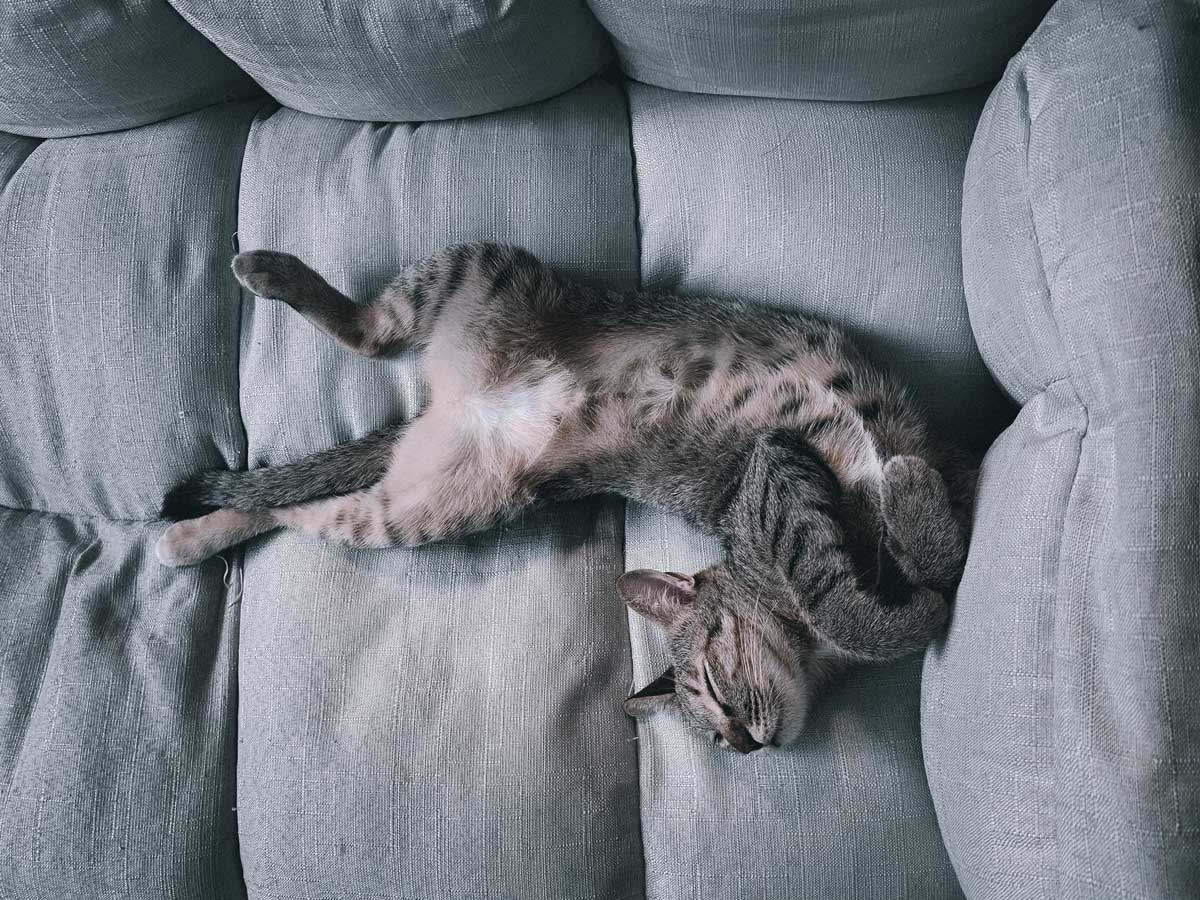
Step-by-step: How to properly care your upholstered furniture
The cleaning and waterproofing of upholstered furniture such as couches, sofas, armchairs and upholstered chairs is an important part of home care.
Cleaning upholstered furniture can be easy when you know the right steps. Here's a quick guide on how to use a cleaner to remove dirt from upholstered furniture.
-
Remove loose dirt: Remove loose dirt particles such as dust, hair or crumbs from the upholstered furniture. It is best to use a vacuum cleaner with an upholstery brush attachment.
-
Test the cleaner: Before using the cleaner on the entire upholstery, test it on an inconspicuous area to make sure it doesn't discolor or alter the material.
-
Apply the cleaner: Spray the cleaner evenly over the upholstered furniture so that the surface is well soaked.
-
Let the cleaner sit: Let the cleaner sit on the upholstery for the recommended amount of time. This may vary depending on the cleaner and type of upholstery.
-
Clean the fabric: Use a clean, damp sponge or cloth to remove the cleaner from the fabric. Always wipe in one direction to avoid water stains.
-
Let the upholstered furniture dry: Let the upholstered furniture dry completely before using it again. This can take several hours.
-
Optional: Repeat the process: If the upholstered furniture is still dirty, repeat the process.

By following these simple steps, you should be able to effectively clean your upholstered furniture with a cleaner and breathe new life into it. We now recommend waterproofing your upholstered furniture afterwards, as this will extend the life of your furniture.
One of the biggest advantages of waterproofing is that it protects the fabric from stains and dirt. We all know the situation when a drink was spilled on the sofa. Without waterproofing, it can be difficult to remove stains from the fabric. However, waterproofing forms an invisible layer on the fabric that repels dirt and stains. So you can keep your furniture cleaner for longer.
The use of waterproofer is not only useful for upholstered furniture in the living room, but also for other areas such as car seats, dining room chairs or outdoor upholstered furniture. These pieces of furniture are often more exposed to the weather and therefore require special protection.
Another big challenge with upholstered furniture is the smell. Whether it's the smell of animals, smoke or just everyday use, a waterproofing can help minimize the odor and prevent it from settling into the fabric.
In addition to protecting against stains and odors, waterproofing is also important to keep your upholstered furniture looking fresh and new for longer. With daily use, the fabric can quickly become worn and faded. Waterproofing can prevent this and ensure that your furniture still looks like new years later.
Here is a quick guide on how to spray waterproof upholstery:
-
Preparation: Make sure the upholstery is clean and dry before you start the waterproofing. Remove loose debris such as dust, hair, or crumbs.
-
Test the waterproofing: Before applying the waterproofing to the entire upholstery, test it on an inconspicuous area to make sure it doesn't discolor or alter the material.
-
Shake the bottle or can: Shake the spray waterproofer well before using to ensure the ingredients are well mixed.
-
Spray on the waterproofer: Spray the waterproofer evenly and generously on the upholstered furniture. Make sure the material is well soaked.
-
Wipe off excess waterproofer: Use a clean cloth to wipe excess waterproofing off the upholstery.
-
Let the waterproofer take effect: Let the waterproofing take effect on the upholstery for the recommended time. This may vary depending on the product.
-
Let the upholstered furniture dry: Let the upholstered furniture dry completely before using it again. This can take several hours.

By following these simple steps, you should be able to spray waterproof your upholstered furniture and protect it from dirt and liquids. Please note, however, that waterproofing should be repeated regularly to extend the life of your upholstered furniture.

